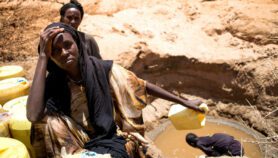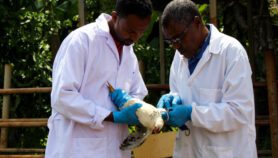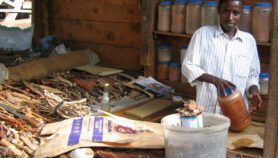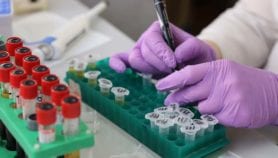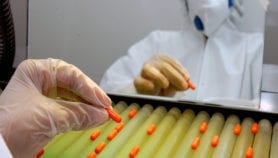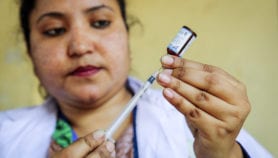Send to a friend
The details you provide on this page will not be used to send unsolicited email, and will not be sold to a 3rd party. See privacy policy.
The feeling in the room was one of tired relief when delegates finally adopted the new International Treaty on Plant Genetic Resources for Food and Agriculture on November 3, 2001. After seven long years of stormy negotiations at the UN’s Food and Agriculture Organisation (FAO), a deal was finally struck on the rules of the game for sharing, conserving and using the world’s crop genetic resources. The FAO’s Director General tried to lift the mood by proudly declaring it the “first treaty of the millennium,” marking a giant step towards food security on the planet. But government delegates and NGOs alike were left feeling anticlimactic: many of the central issues remain unresolved and open to interpretation.
The new Treaty aims to ensure food security through the conservation, exchange and sustainable use of plant genetic resources. Its overall focus encompasses all plant genetic resources for food and agriculture. But its core provisions on access and benefit sharing only apply to a small and specific list of crops. The genetic resources of those crops will be pooled into a multilateral system that will operate under the rules of the Treaty.
The Treaty has been under negotiation for the past seven years. An earlier voluntary version of it (called the ‘International Undertaking’ or IU) had been agreed to by the member states of FAO back in 1981. The IU framed genetic resources as the common heritage of humanity and aimed to protect them accordingly. But the IU was overrun by the new political reality of the Convention on Biological Diversity (1993), which brought genetic resources under jurisdiction of national governments and linked access to these resources with the fair and equitable sharing of benefits accrued from them.
The underlying objective of FAO’s special deal for agricultural crops — to ensure the continued availability of genetic resources for food and agriculture — has not changed in those twenty years. It has only become more urgent.
The central challenge in the final stretch of the negotiations was to reach agreement on whether and to what extent monopoly tools such as intellectual property rights (IPR) should be allowed under the rules of the Treaty. Since the beginning, GRAIN has argued against allowing any IPR on the material covered by the Treaty: it should clearly ban patents, plant breeders’ rights and other mechanisms that privatise and restrict access to agricultural genetic resources. After all, what is the use of an agreement that aims to promote access to genetic resources while at the same time allowing restrictive property rights? The compromise text that governments finally agreed on contains a very muddled paragraph on IPR. While optimists will says it leaves room for an anti-IPR stance, the article in question basically states that the seeds and other genetic materials governed by the Treaty can be patented — as long as they are modified in some way.
Another important expectation fuelling the Treaty negotiations was that it would establish clear rights for farmers and local communities to freely use, exchange and further develop the seeds they manage. As Seedling readers know, these rights are widely undermined now in many countries by new gene technologies, legal and contractual restrictions imposed by corporations and intellectual property rights. The contribution of farmers to the creation and management of genetic diversity is applauded in several parts of the new Treaty, but the final formula on Farmers’ Rights boils down to a very weak statement of principles. It also leaves the responsibility for implementing these rights to national governments and is not backed up by any international mechanism or enforcement procedure.
A third issue central to the debate was the question of how benefits arising from commercial use of the genetic material covered by the Treaty will be shared. Governments agreed that companies that market products derived from material covered by the Treaty and restrict access to it should pay some amount of money into a common fund. But the critical questions of how much, in what form, and under what conditions have still to be settled once the Treaty comes into force. Uncertainty over whether the benefit sharing arrangement in the Treaty will actually work caused many developing countries to be conservative with the number of crops they allowed to be included in the Treaty.
For those who expected the Treaty to create a strong and unambiguous international instrument to stop the further privatisation of crop genetic resources and safeguard the rights of farmers, the conclusion has to be that it fails to do so. A lot is left up to consensus interpretation and future debate, once the Treaty comes into force and its governing body starts to meet. This is a disappointing and potentially dangerous outcome. Together with other organisations, GRAIN has long been arguing that the world needs a strong and independent legal charter to safeguard food crops, and small farmers, against the pervasive privatisation of biodiversity. At the same time, we have also been opposing the imposition of other agreements, such as those implemented by the World Trade Organisation, that ruthlessly prioritise commercial and international trade interests over and above agriculture and local food security.
Only time will tell whether the new Treaty will make a difference in promoting food security and sustainable management of biodiversity. The risk is that the weak text agreed upon in November, international trade forces and national short-term interests will turn its implementation into a crop genetic resources trade fair. The challenge is to turn it into tool that promotes food sovereignty and biodiversity-rich farming under control of local communities. But for that to happen, governments still have to make clear choices — the ones they avoided making when finalising the Treaty.
This article was taken from Seedling, Volume 18, Issue 4, December 2001, GRAIN Publications
See also: Text of the Treaty (requires Adobe Acrobat)


